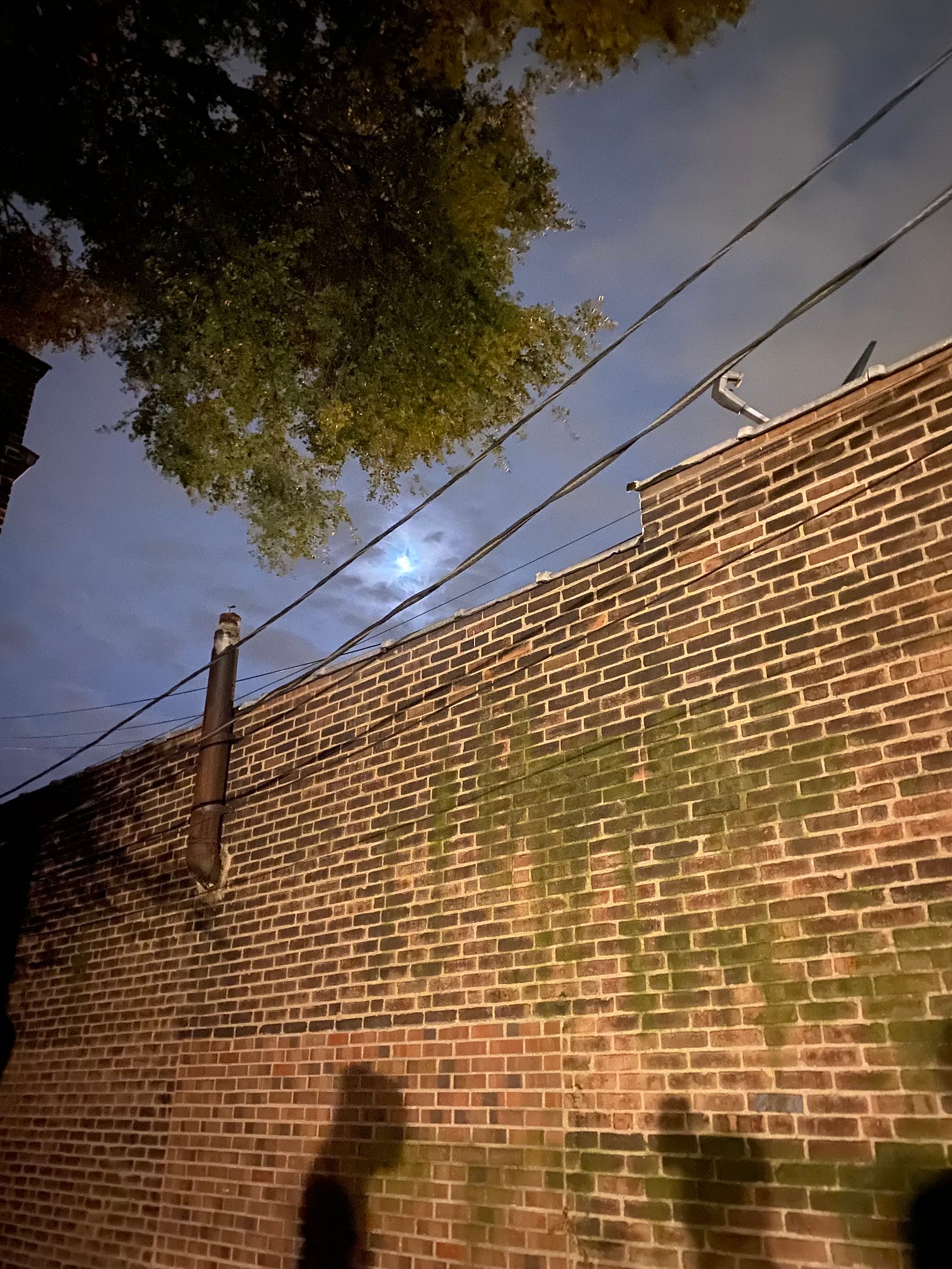"...to think and feel a then and there."
radical love letter #75 | on prefiguring radical spaces
Dear ones,
I was eighteen years old when I went to my first anarchist social center. It was The A-Zone in Chicago, in 2003. I had already met anarchists at Food Not Bombs, had already seen zines strewn about the coffee tables at DIY house shows, but this was my first proper introduction to a real infoshop. An infoshop, I would learn from my anarchist-sympathetic communist friend who’d been in the game years before me, is a space created to share anarchist ideas — through lit, potlucks, movie nights, meetings, reading groups, and general conversation. They began in Europe, almost entirely squatted, then burgeoned in the US in the 90s alongside the anti-globalization movement. It was harder to squat in the states, but even the rented spaces were still free to be in, and run by volunteers. I became so enamored with the goals of infoshops – specifically, I became near-obsessed with making sense of, building, critiquing, and holding onto the kind of community that infoshops could nurture – that I wrote an entire masters thesis about them.
This past weekend, nineteen years later, I helped open the doors to a radical community space in Cleveland. I was surrounded by some of the same art that was in those early Chicago spaces, and also by giant black protest banners that weren’t two decades old, but could have been. Radical culture is somehow both deeply ephemeral and steadfastly enduring. A lot of anarchist projects are intentionally short-lived– “temporary autonomous zones” of a squat, or a basement show, or a riot– but we have created a rich and familiar canon of rituals, archives, artifacts. This has always been a double edged sword (or, perhaps, a two sided molotov?)--when ideology becomes subculture, it has the potential to create a deeper sense of belonging, but also to intimidate ‘outsiders’ from participating. This tension has been a point of conversation among anarchists for decades, and in our Cleveland collective too; there aren’t easy answers. I tend to be more on the side of inclusivity, but I also don’t want to give up the affective stirrings of joyful recognition when I spot a circle A patch in the wild, or a Crimethinc dishes poster above someone’s sink. I like the little winks, the little nods. We’ll see if our space can offer both: infrastructure to carry on historical/cultural touchstones of anarchist movements, and infrastructure to expand and shapeshift into whatever it needs to be to help us inch closer to liberation.
That’s the neat thing about spaces. They aren’t nearly as static as walls suggest.
“The work of inhabiting space involves a dynamic negotiation between what is familiar and unfamiliar, such that it is still possible for the world to create new impressions, depending on which way we turn, which affects what is within reach,” writes Sara Ahmed in Queer Phenomenology.
Put more simply, space is something that shapes us and that we shape. Back to more complicatedly, Ahmed continues:
“...‘dwelling’ refers to the process of coming to reside, or what Heideggar calls ‘making room’, and also to time: to dwell on something is to linger, or even to delay or postpone. If orientation is a matter of how we reside, or how we clear space that is familiar, then orientations also take time and require giving up time…Even when orientations seem to be about which way we are facing in the present, they also point us to the future.”
Our bodies in explicitly anti-capitalist spaces–and in spaces that at least put effort into dismantling hierarchy, even if never entirely successful– can be a practice of prefiguration. When I am feeling romantic about infoshops and spaces like them, I believe they are truly new worlds in the shell of the old. Not just models of what could be, but time traveling portals of what has already been and could be again, and therefore is right now. “The here and now is a prison house,” writes late, anarchist-leaning queer theorist José Esteban Muñoz. “We must strive, in the face of the here and now’s totalising rendering of reality, to think and feel a then and there.”
It is no surprise, when I felt radical political longings in my bones as a teenager, that I found anarchism first, because anarchists were the ones who had spaces for me to go. Sometimes those spaces felt uncomfrotable – see the humiliating chapter of my book about my first time at Food Not Bombs in which I did not have the right clothes, nor know the namesake of a cat named Emma – but even when that was the case, and especially when it wasn’t, they also felt…magical.
As we prepared our little celebration gala for the space, I kept thinking of a passage from a Off the Map by Hib and Kika, a beloved book for many anarchists of a particular lot:
“We have transformed space and lived in it. We would do this anywhere. Anywhere we go we will clean a little or a lot, make some food and make some magic, learn about love and revolution from whatever surrounds us.”
These are our tasks, I think. In explicitly radical spaces or not (though what space is more radical–more at the root –than the woods, the water, the rocks?), we can practice transformation, tending to our bellies and our hearts, listening, offering. Hib and Kika again: “Anywhere we go we [can] make gardens with whatever seeds are available to us.”
love & solidarity,
raechel




